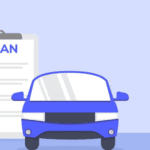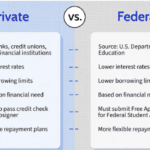Leasing vs. Buying a Car: What’s the Better Financial Choice?
When getting a new car, one of the biggest financial decisions you’ll face is whether to lease or buy. Both options have advantages and drawbacks, and the right choice depends on your financial situation, driving habits, and long-term goals. Let’s break down the pros and cons of leasing vs. buying to help you make an informed decision.
The Case for Leasing
Leasing a car is similar to renting—it allows you to drive a new vehicle for a fixed period (usually 2-4 years) while making monthly payments. At the end of the lease, you return the car or have the option to buy it at a predetermined price. Here are some of the key benefits of leasing:
Pros:
- Lower Monthly Payments – Lease payments are typically lower than loan payments for the same vehicle because you’re only paying for depreciation over the lease term rather than the full cost of the car.
- Lower Upfront Costs – Leasing often requires little to no down payment, making it more affordable initially.
- Access to Newer Models – You can drive a new car every few years, benefiting from the latest technology, safety features, and fuel efficiency.
- Warranty Coverage – Most lease terms align with the manufacturer’s warranty, meaning fewer unexpected repair costs.
However, leasing also has some downsides:
Cons:
- No Ownership Equity – You don’t build equity in the car, so you’ll always have a monthly payment if you continue leasing.
- Mileage Limits – Most leases impose mileage restrictions (typically 10,000-15,000 miles per year), with hefty fees for exceeding them.
- Wear and Tear Charges – You may have to pay extra for excessive wear and tear when returning the vehicle.
- Long-Term Cost – Leasing continuously can be more expensive over time than buying and keeping a vehicle for many years.
The Case for Buying
Buying a car means you either pay for it outright or finance it with an auto loan. Once the loan is paid off, the vehicle is yours. Here’s why purchasing a car might be the better option:
Pros:
- Ownership and Equity – Once you’ve paid off the car, it’s yours, and you can drive it without monthly payments.
- No Mileage Restrictions – You can drive as much as you want without worrying about overage fees.
- Customization Freedom – Since you own the car, you can modify it however you like.
- Long-Term Savings – Although loan payments may be higher than lease payments initially, owning a car for several years without a car payment can save you money in the long run.
However, buying also has drawbacks:
Cons:
- Higher Monthly Payments – Loan payments are often higher than lease payments, making it more expensive in the short term.
- Depreciation – Cars lose value quickly, especially in the first few years.
- Out-of-Warranty Repairs – Once the warranty expires, you’ll be responsible for maintenance and repair costs.
Which Option Is Right for You?
The best choice depends on your financial priorities and driving habits.
- Leasing might be better if you prefer driving a new car every few years, want lower monthly payments, and don’t drive excessive miles.
- Buying might be better if you plan to keep the car long-term, drive frequently, and want to build equity.
Final Thoughts
Both leasing and buying have their financial advantages and disadvantages. If you value lower payments and driving a new car often, leasing might be for you. If you’re looking for long-term savings and ownership benefits, buying is likely the better choice. Consider your budget, lifestyle, and financial goals to make the best decision for your needs.




